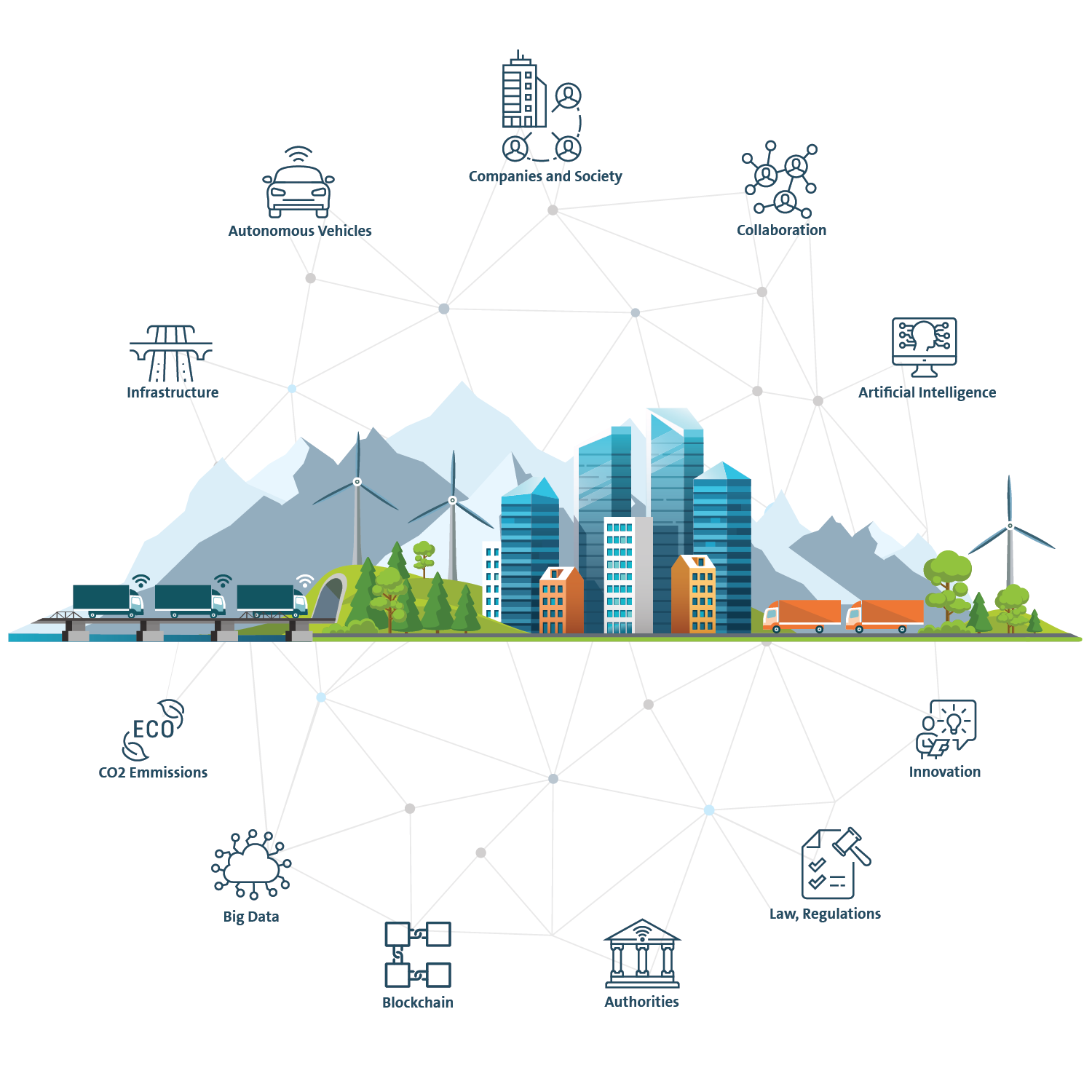The future of road freight logistics: An examination of Mobility 4.0 integration and related governance challenges
Swiss road freight transport is facing disruptive changes. Our paper examines the governance challenges and the required structure for the integration of Mobility 4.0 or autonomous vehicles.

Topic
The Swiss road freight sector is undergoing profound changes due to rapidly changing customer needs, global megatrends, and driver shortage. These changes pose major challenges for stakeholders in the logistics sector. Moreover, limited and diverse scientific evidence on the topic creates a significant challenge for policymakers. Additionally, there are several barriers in terms of regulation, in cooperation, lack of funding in infrastructure matters to the deployment of Mobility 4.0. The work therefore refers to the investigation of existing governance in road freight transport as well as challenges for the establishment of a suitable governance structure in a Mobility 4.0 ecosystem with autonomous vehicles.
Relevance
The integration of Mobility 4.0 into existing ecosystems and governance structures in Swiss road freight logistics is a topic of increasing importance as technology continues to advance and disrupt traditional transportation systems. Switzerland is also considered a logistics hub in Europe, and interoperability in transport routes is essential for the international movement of goods over roads. Furthermore, the logistics industry provides significant economic benefits for Switzerland. Therefore, the current research question has high practical relevance for Swiss road transport logistics companies and for the current logistics sector because Mobility 4.0 will be crucial to remain competitive and fulfill their customers needs.
Results
Although some existing governance structures cover aspects of a functioning Mobility 4.0 ecosystem, the interviews revealed several challenges and, consequently, reasons existing structures may not be sufficient to effectively establish self-driving vehicles in road freight transport. Establishing Mobility 4.0 in road freight transport will require the cooperation of various players from the public and private sectors. Innovative and adaptive governance approaches and iterative rulemaking can address the dynamics of Mobility 4.0. Collaborative governance is recommended as a suitable structure. It brings together necessary stakeholders to facilitate consensus-based decision-making for establishing Mobility 4.0 in road freight transport.
Implications for practitioners
· Focus on collaboration: Relevant stakeholder should strive for active and collaborative governance structures in the logistics industry. Collaborative decision-making processes with various stakeholders can help develop effective and efficient strategies for implementing Mobility 4.0.
· Agility: In the face of rapidly changing technologies and customer expectations, logistic companies in road freight transport should be prepared to adapt their business models. They must be flexible and ready to keep up with the pace of technological change.
· Consideration of regulatory hurdles: Practitioners must actively address regulatory challenges. They should seek opportunities to influence the policy agenda to reduce regulatory barriers and facilitate the transition to Mobility 4.0.
Methods
To answer the research question, a qualitative content analysis was conducted. We considered data collection through expert interviews in form of a semi-standardized guided interview. The literature review allowed us to ask better questions, absorb knowledge, and deduce implications from the relevant experts in the field. Each interview was coded in Maxqda. The coding process took place according to the grounded theory model, where at the end the codes were merged into categories. The coding process took place in an iterative way.
